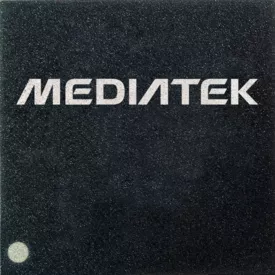Mediatek Dimensity 7200 vs MediaTek Dimensity 9000 Plus
SOURCE ARTICLES
Dimensity 7200 Pro vs Snapdragon 7s Gen 2 vs Snapdragon 782G: Benchmark Comparison
beebom.com
The Dimensity 7200 Pro chipset on the Nothing Phone (2a) performs well in synthetic benchmarks, with a high score in Geekbench 6 and AnTuTu tests. It has newer ARM cores and a powerful Mali G610 MC4 GPU. The Snapdragon 7s Gen 2 on the Poco X6 also performs well, especially in multi-core tests. The Snapdragon 782G on the OnePlus Nord CE 3 has the highest single-core score but is fabricated on an older process node. In terms of CPU throttling, the Snapdragon 782G and Dimensity 7200 Pro perform well. The Dimensity 7200 Pro also excels in the 3DMark GPU test. In terms of 5G speed, the Snapdragon 7s Gen 2 performs the best. Overall, the Dimensity 7200 Pro offers good performance and efficiency, making it a competitive choice in the mid-range segment.
Exploring the exceptional capabilities of the MediaTek Dimensity 7200 Pro-powered Nothing (2a)
www.91mobiles.com
The Nothing (2a) smartphone, powered by the MediaTek Dimensity 7200 Pro processor, offers a unique design with a transparent rear cover and Glyph Interface. It delivers impressive gaming performance with the Arm Mali-G610 MC4 GPU and features a vapor chamber cooling system. The phone has a large 5000mAh battery that lasts up to two days and supports 45W fast charging. The dual-rear camera system includes a 50MP primary camera with OIS and EIS, and the front camera uses AI algorithms for better selfies. The 6.7-inch flexible AMOLED display has slim bezels and supports up to 120Hz refresh rates. Overall, the Nothing (2a) promises an exceptional mobile experience.
MediaTek’s new Dimensity 7200 Ultra brings its 4nm process to upper-midrange phones
www.androidpolice.com
MediaTek's new Dimensity 7200 Ultra chip is aimed at the upper-midrange smartphone market. It features an 8-core processor, AI imaging capabilities, and a GPU that can handle a 144Hz refresh rate. Gamers will benefit from gaming optimizations and AI resource optimization for extended battery life. The chip will debut in the Redmi Note 13 Pro+ in September. The phone will have a 200MP camera, 120W fast charging, and a 6.67-inch AMOLED display.
MediaTek Dimensity 7200: specs and benchmarks
The MediaTek Dimensity 7200 is an 8-core chipset manufactured using a 4-nanometer process technology. It has 2 Cortex-A715 cores at 2800 MHz and 6 Cortex-A510 cores at 2000 MHz. In benchmarks, it scored 706,552 in AnTuTu 10, 4166 in 3DMark Wild Life Performance, and had a GeekBench score of 4166. It features a Mali-G610 MP4 GPU with a frequency of 1130 MHz. The chipset supports LPDDR5 memory with a frequency of 3200 MHz and has a maximum display resolution of 2520 x 1080. It also supports 5G connectivity with download speeds of up to 4700 Mbps and upload speeds of up to 2500 Mbps.
Dimensity 9000 Plus vs Dimensity 9000: tests and benchmarks
The Dimensity 9000 Plus has advantages over the Dimensity 9000, including a higher GPU frequency, better AnTuTu scores, and a higher CPU clock speed. In benchmarks, the Dimensity 9000 Plus outperforms the Dimensity 9000 in both AnTuTu and Geekbench tests. The specifications of both chips are similar, with the Dimensity 9000 Plus having a slightly higher GPU frequency and more efficient memory. Overall, the Dimensity 9000 Plus is the better choice.
Dimensity 9000 vs. Snapdragon 8 Gen 1 Special Review: Performance/Energy Efficiency & more
The Dimensity 9000 outperforms the Snapdragon 8 Gen 1 in terms of CPU performance, with higher scores in Geekbench 5. The GPU performance is slightly inferior to the Snapdragon 8 Gen 1, but the gaming performance is similar in actual games. The Dimensity 9000 also has better temperature control, running cooler than the Snapdragon 8 Gen 1 during gaming. In terms of power consumption and energy efficiency, the Dimensity 9000 has a lower power consumption and higher energy efficiency ratio. Overall, the Dimensity 9000 is a clear winner in performance and energy efficiency.
MediaTek Dimensity 9000 Plus review
The MediaTek Dimensity 9000 Plus has a CPU speed of 3.2 GHz, 2.85 GHz, and 1.8 GHz. It uses big.LITTLE technology to switch between powerful and less powerful cores for performance and battery life optimization. It also has Heterogeneous Multi-Processing for utilizing all cores or a single core for different tasks. The L2 and L3 cache sizes are unknown, but larger caches result in faster performance. The clock multiplier controls the CPU speed.
Benchmark showdown: Snapdragon 8 Plus Gen 1 vs Dimensity 9000 Plus
The review compares the Snapdragon 8 Plus Gen 1 and Dimensity 9000 Plus chips. The Dimensity 9000 Plus performs better in CPU-heavy workloads, while the Snapdragon 8 Plus Gen 1 has a slight advantage in graphics performance. MediaTek's chip has a larger cache and performs well in multi-threaded workloads. Both chips have good sustained performance, but the Dimensity 9000 Plus performs better in power consumption optimization. The Snapdragon's Adreno GPU is more future-proof. Overall, both chips offer high performance for demanding users.
Snapdragon 8 Gen 2 vs MediaTek Dimensity 9000+: Qualcomm is the undisputed GPU king
The Snapdragon 8 Gen 2 outperforms the MediaTek Dimensity 9000+ in terms of GPU performance, making Qualcomm the undisputed GPU king. However, the Dimensity 9000+ remains competitive in CPU performance. Qualcomm also excels in AI capabilities, while MediaTek struggles to keep up. In terms of power consumption, the Snapdragon 8 Gen 2 has a lower maximum wattage. Overall, Qualcomm's chipset is the best Android SoC currently available, with MediaTek having a tough challenge ahead to catch up.
MediaTek Dimensity 9000+ Processor - Benchmarks and Specs
The MediaTek Dimensity 9000+ processor has been benchmarked and its specs have been revealed. It performs well in average benchmarks and has a range of features.
Qualcomm Snapdragon 8 Plus Gen 1 vs MediaTek Dimensity 9000 Plus: Neck and neck in every aspect
The review compares the MediaTek Dimensity 9000 Plus and Qualcomm Snapdragon 8 Plus Gen 1 chipsets. The Dimensity 9000 Plus has higher clock speeds and a larger system-level cache. It performs well in CPU-centric computational tasks but falls behind in GPU performance compared to the Snapdragon 8 Plus Gen 1. Both chipsets drain battery quickly and have similar power efficiency. The Snapdragon 8 Plus Gen 1 performs better in CPU throttling tests. In terms of graphics, the Snapdragon's Adreno GPU outperforms the Mali GPU in the Dimensity 9000 Plus. Overall, the Snapdragon 8 Plus Gen 1 is considered the better chipset.
+ 8
AI COMPARISON
Comparison Table
| Feature | Mediatek Dimensity 7200 | Mediatek Dimensity 9000 Plus |
|---|---|---|
| Total Clock Speed | 17.6 GHz | 18.95 GHz |
| RAM Speed | - | 3750 MHz |
| Download Speed | 4700 MBits/s | 7000 MBits/s |
| Semiconductor Size | 4 nm | 4 nm |
| DDR Version | 5 | 5 |
| 64-bit Support | Yes | Yes |
| Integrated Graphics | Yes | Yes |
| 5G Support | Yes | Yes |
| DirectX Version | None | 12 |
| Big.LITTLE | Yes | Yes |
| HMP | - | Yes |
| Max Memory Size | - | 24GB |
| Max Memory Bandwidth | - | 60 GB/s |
| GPU Execution Units | - | 10 |
| LTE on SoC | Yes | Yes |
Summary
Performance: The Mediatek Dimensity 7200 offers solid performance with a total clock speed of 17.6 GHz, while the Dimensity 9000 Plus edges it out slightly with an 18.95 GHz clock speed and additional RAM speed of 3750 MHz. The 9000 Plus also boasts superior download speeds at 7000 MBits/s compared to 4700 MBits/s of the 7200.
Graphics and Gaming: Both chipsets support integrated graphics, but the 9000 Plus advances further with a DirectX version of 12 and a higher number of GPU execution units (10), potentially offering better gaming and graphics performance.
Technology and Efficiency: Both chipsets use a 4 nm semiconductor size. The 9000 Plus supports heterogeneous multi-processing (HMP), which allows better management of cores for performance and efficiency, a feature not listed for the 7200.
Memory and Connectivity: The 9000 Plus supports up to 24GB of memory and has a max memory bandwidth of 60 GB/s, specifications that are superior to the 7200 and offer potential for better multitasking and faster data processing.
Recommendations
For Gamers: The Mediatek Dimensity 9000 Plus is recommended due to its higher GPU execution units and support for DirectX 12, which are crucial for high-performance gaming.
For Power Users: Users who multitask heavily and utilize intensive applications may find the Dimensity 9000 Plus more beneficial, given its higher total clock speed, superior memory capabilities, and advanced HMP technology.
For Everyday Users: For general use, including browsing and moderate app usage, the Dimensity 7200 provides ample performance with good efficiency and a lower price point, making it suitable for budget-conscious users looking for reliable performance.
PRICES
ASK AI
BestVs.ai
Hello, I'm your AI shopping assistant. How can I help you?
AI can make mistakes. Consider checking important information.


